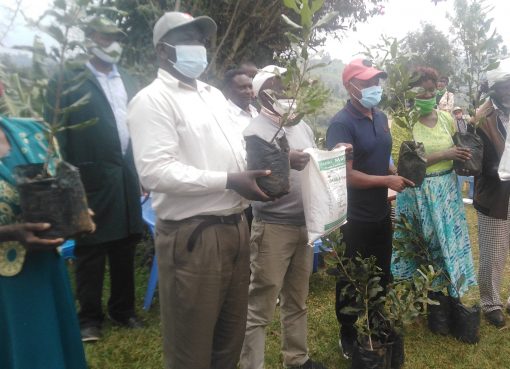The construction of Sh.490 million seawall to protect the foundation of the historic Fort Jesus Museum in Mombasa from collapsing is almost 80 per cent complete.
The structurally sound seawall is being built by the National Museums of Kenya (NMK) to prevent strong sea waves from pounding the museum’s foundation whose cliff on which the fort stands is slowly being eroded.
The NMK has expressed fears that if the barrier is not urgently constructed, the fast rising sea water levels will erode the underneath layer and expose the historical site to danger of sinking.
According to Fort Jesus Museum Curator, Fatma Twahir the national government has released the required funds to NMK for the completion of the wall whose construction started in 2018.
“Since we now have the funds, we expect the contractor, Yangguang Property Design and Manufacturing Limited, to complete the remaining work by the end of May this year,” said Twahir during Mombasa County Development Implementation Coordination Committee Meeting.
The fort built by the Portuguese in 1596 was declared a World Heritage site by the United Nations Educational, Scientific and Cultural Organization (UNESCO) in 2011 and highlighted as one of the outstanding and well-preserved examples of 16th century Portuguese military fortifications.
The Portuguese who had seized control of East African coast used the fort as a base to wade off invaders from Oman and was also used as a prison.
It was the first European-styled forte constructed outside Europe and designed to resist canon fire and is a popular destination for foreign and local tourists.
Some of the historical structures still standing in the fort include the one storey Oman House, which was the house for the Sultan (ruler of a Muslim state) who governed the East African coast and is steeped in history.
In 2017, the sultanate of Oman refurbished some of the historical structures still standing at the Fort Jesus museum in Mombasa.
The grand refurbishment has attempted to return the ornate historical buildings within the landmark fort back to some of its original splendor.
It is a protected edifice due to its historical and architectural significance and the restoration and refurbishment strategy involved enabling the building to fulfill its functions as a museum while preserving the features of the original structure.
The Oman House and the Mazrui Hall Exhibition were refurbished by the National Records and Archives Authority of the sultanate of Oman.
Between 1631 and 1875, the fort was won and lost nine times by the Portuguese, the Omanis and the British contesting control of the Kenyan coast.
The NMK had sought the help of the government and donors for funds to protect Fort Jesus and other historical sites across the coastline from destruction as a result of strong tidal sea waves caused by a warming planet.
The NMK Director General, Dr. Mzalendo Kibunjia said in an interview with Kenya News Agency that heritage sites and landmarks like the Fort Jesus, Vasco Da Gama Pillar, the Old British Customs House and the Jumba La Mtwana (the large house of the slave) are all at risk of being lost to the sea because of coastal erosion.
Jumba La Mtwana in Kilifi County is a picturesque Swahili settlement and the ruins are a fascinating place that continues to attract visitors, students and researchers with its centuries-old ruins of mosques, elaborate tombs and stone houses that have survived in recognizable condition.
Dr. Kibunjia said there are no written historical records of the ancient town but ceramic and archeological findings show that it was been built in the 14th century but abandoned in the 15th century due to diseases and war.
The inhabitants of this abandoned 12-acre settlement were Muslims due to the presence of mosques, ancient tombs and Swahili houses and traded with people from the Arabian Peninsula.
“These entire historical and cultural sites along the shoreline enlisted by UNESCO for their outstanding universal value now face perilous and uncertain future due to rising sea levels,” said Dr. Kibunjia.
He expressed concern that rising seas fueled by melting glaciers and ice caps threaten to swallow the coastal landmarks and highlighted the losses to the tourism industry should the sites fall victim to a warming planet.
The NMK boss said the historical sites which are also the country’s greatest tourist attractions are under threat from coastal erosion that is chipping away at platforms that have supported them for hundreds of years.
“Climate change is here with us and affecting world heritage and iconic sites around the globe and Kenya is no exception,” said Dr. Kibunjia who called for more resources to shield the heritage properties from falling into permanent ruin.
Dr. Kibunjia disclosed that NMK the state corporation that manages museums, sites and monuments requires Sh100 million to stabilize and fortify all the historical and cultural treasure troves along the coastline, adding the sites from Lamu archipelago to Vanga in Kwale County were at risk of great destruction by the rising sea levels.
By Mohamed Hassan



